There are over 400 UNESCO World Heritage Sites in Europe. In this article, you will discover 15 of the most interesting chosen by fellow travel bloggers.
The world heritage sites in this article are spread across numerous European countries including Italy, Croatia, Scotland, Norway and Denmark.
How many have you visited?
- 15 UNESCO World Heritage Sites to visit in Europe
- The Colosseum in Rome Italy
- The Austrian city of Salzburg
- The old city of Salamanca in Spain
- Bryggen in Bergen Norway
- Convent of Christ from Tomar in Portugal
- Mont Saint-Michel in France
- Pompeii in Italy
- The canals of Amsterdam in the Netherlands
- Edinburgh's Old and New Towns
- Drottingholm Palace in Stockholm Sweden
- Meteora in Greece
- Acropolis in Athens Greece
- Paris France
- The Palace of Diocletian in Split Croatia
- UNESCO World Heritage Sites around the world
15 UNESCO World Heritage Sites to visit in Europe
The Colosseum in Rome Italy
The Colosseum is an oval amphitheatre in the centre of the city of Rome, Italy. It was used mainly for gladiatorial contests, mock sea battles, executions or mythology-based dramas. The Colosseum was built in 72 AD and could hold up to 80 000 spectators.
The Colosseum is an important place for Roman Catholics. On Good Friday the Scriptural Way of the Cross is led by the Pope and takes place in the Colosseum.
D you know that the Colosseum is also a symbol of the international campaign against capital punishment? Whenever a person condemned to the death penalty anywhere in the world has their sentence changed the facade turns yellow at night (instead of ordinary white).
The Colosseum is an extremely popular tourist attraction in Rome. To avoid the crowds buy your ticket in advance and go there early in the morning. You will have a chance to experience the majesty and overwhelming architecture of this magnificent structure without the crowds.
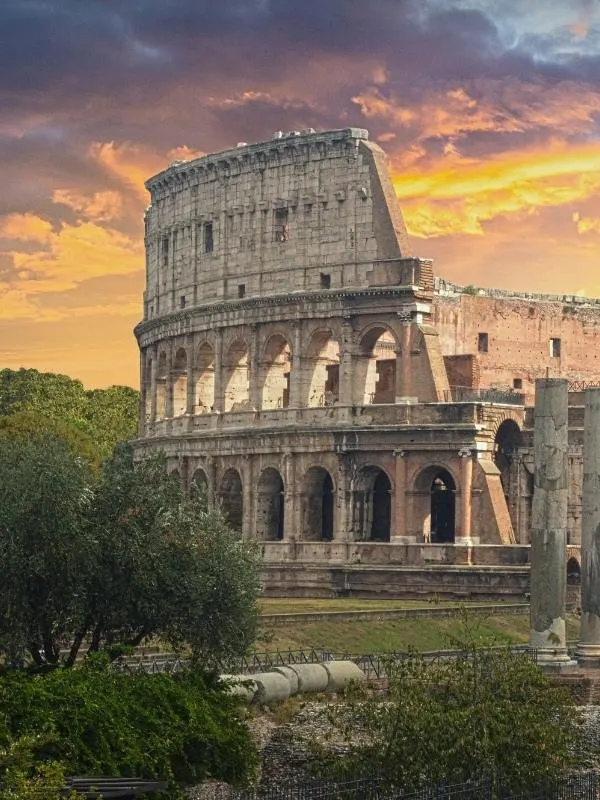
The Austrian city of Salzburg
by travelingspud.com
Salzburg, Austria is, without a doubt, one of the most enchanting cities in all of Europe. You may have heard of it as the backdrop to the famous film, The Sound of Music, but it is much more than just the touristy locations from the movie.
Salzburg is a city of splendour and has its own special charm that is not to be missed on a trip to Austria. The Baroque architecture on every corner, the endless picturesque gardens and the ornate palaces and museums makes wandering through Salzburg a rare treat.
Not to mention, it is the home of the famous composer, Mozart, and has many statues and museums to commemorate his birth and legacy. Be sure to take your time in Salzburg strolling through the streets, trying Austrian cuisine, checking out the sites and, of course, soaking up the rich culture of this famous UNESCO World Heritage city.
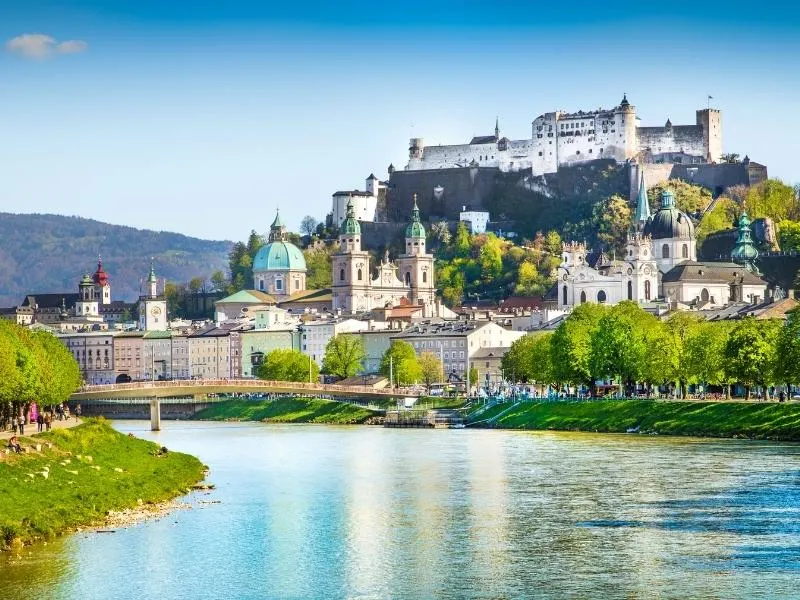
The old city of Salamanca in Spain
The Old City of Salamanca in Spain is a UNESCO world heritage site and a hidden gem.
Anyone who has seen the movie Vantage Point will instantly recognize the Plaza Mayor in Salamanca. The Plaza Mayor is the center of the old city but it’s not the centerpiece of the city.
In Salamanca the new cathedral is the main focal point and you can see this beautiful cathedral from almost anywhere in the old city. I would recommend photographing it from the other side of the river as this gives a perfect reflection (in the evening).
Salamanca is a university town, home of the oldest university in Spain and the third oldest university in the world. Around the old town you’ll see many historic buildings which are part of the university campus.
If you visit Salamanca in the summer, it’s extremely hot, so do as the Spanish do and take a siesta. The restaurants around the old city don’t serve food until around 9pm, if you do want to eat earlier there are many tapas restaurants serving Serrano ham and cured Manchego cheese.
A stay in a hotel in the old city would be an official stay in a UNESCO world heritage site.
Watch these Spanish movies and Spanish TV shows on Netflix before you go!
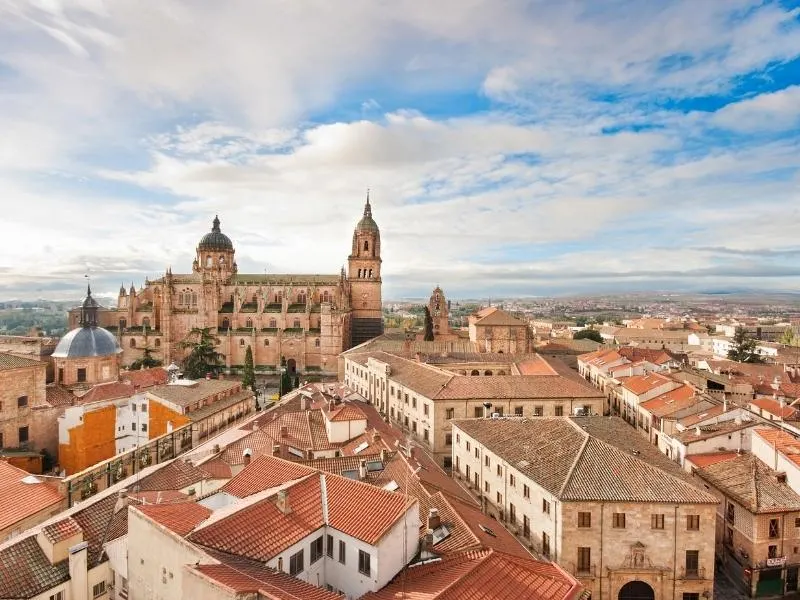
Bryggen in Bergen Norway
The colourful row of wooden houses at the waterfront in Bergen has been on the UNESCO World Heritage list since 1979. After the Black Death wiped out a huge part of the local population, the Hanseatic merchants established an office in Bergen to trade stock fish from the north of Norway, lasting for about 400 years.
The buildings served as storage, office and residence for the German tradesmen, with separate houses used for cooking and as assembly room, as any kind of fire was strictly forbidden in the other buildings. With good reason. The area has burned down many times, and the oldest houses still standing today were rebuilt after a large fire in 1702.
Trade is still very much alive, with many artists having workshops and shops, selling their creations.
Bryggen is an icon for Bergen, and a must-see when visiting the city. Walking in the alleys between the houses, the sounds from the modern life outside are muted, and you can soak in the impressions of this old historical site.
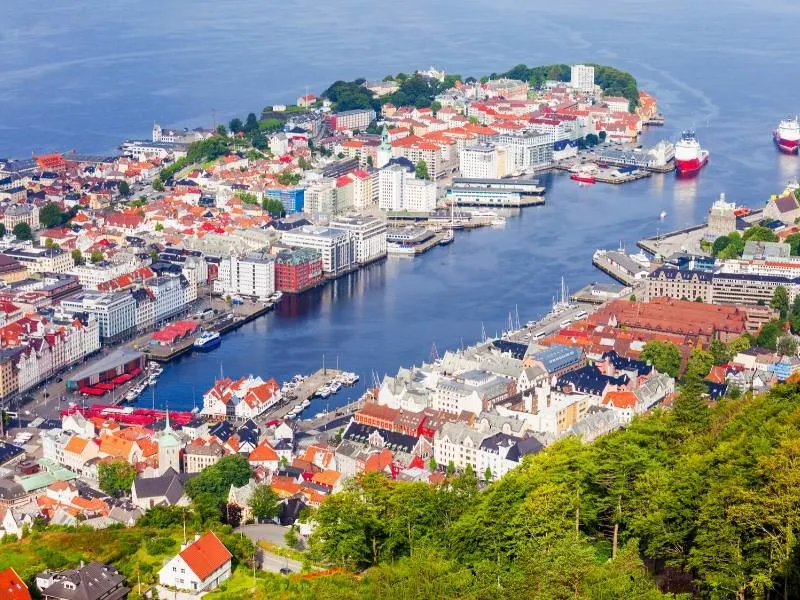
Convent of Christ from Tomar in Portugal
On the road between Lisbon and Coimbra, just a bit over an hour of driving from Lisbon is the small town of Tomar. Here one can find an amazing Templar stronghold, the Convent of Christ.
The complex was built over several centuries starting from the 12th century and is an amazing mix of architectural styles (Romanesque, Gothic, Manueline and Renaissance). It was originally a Templar stronghold, a part of the defence system created to secure the border against the Moors.
When the order was dissolved in the 14th century the Portuguese branch was turned into the Knights of the Order of Christ who continued adding to the complex.
The stronghold is a great place to explore on a day trip and not only by history and architecture enthusiasts. Make sure to set out plenty of time to see it properly as there are loads to explore!
I loved that everywhere you turned there was a new space to discover and new stories to learn. One can explore the gardens, walk around the fortified outer walls, explore the monks quarters and quiet cloisters, admire the very ornate decorations of the church and imagine what it would have been like to live there in medieval times.
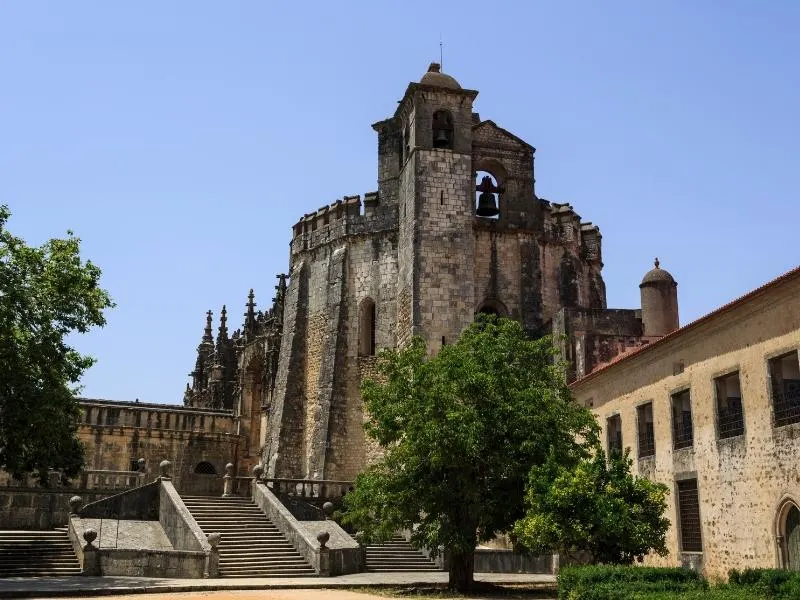
Mont Saint-Michel in France
by Lou Messugo
The first time you see the Mont Saint Michel rising up out of the surrounding bay it takes your breath away as it is an exceptionally beautiful architectural site, created in perfect harmony with its natural surroundings.
The rocky outcrop that becomes an island at high tide has been a holy site since the 8th century, with the Benedictine abbey and village that encircles it built between the 11th and 16th centuries. The whole of the “mount” together with the Bay of St Michel was listed as a UNESCO World Heritage Site in 1979 and nowadays receives 2.5 million visitors a year.
Despite this astonishing figure Mont St Michel is still a sacred site looked after by the Monastic Fraternity of Jerusalem and in among the crowds you occasionally see monks wandering around. Inside the fortified walls, the climb to the abbey at the top is steep.
Avoid going up the main street, take a side path instead and you’ll be rewarded by sensational sweeping views of the bay and marshlands. The abbey itself is staggeringly impressive; high above the village it’s hard to imagine a more unlikely place to find quiet gardens, cloisters and enormous vaulted spaces.
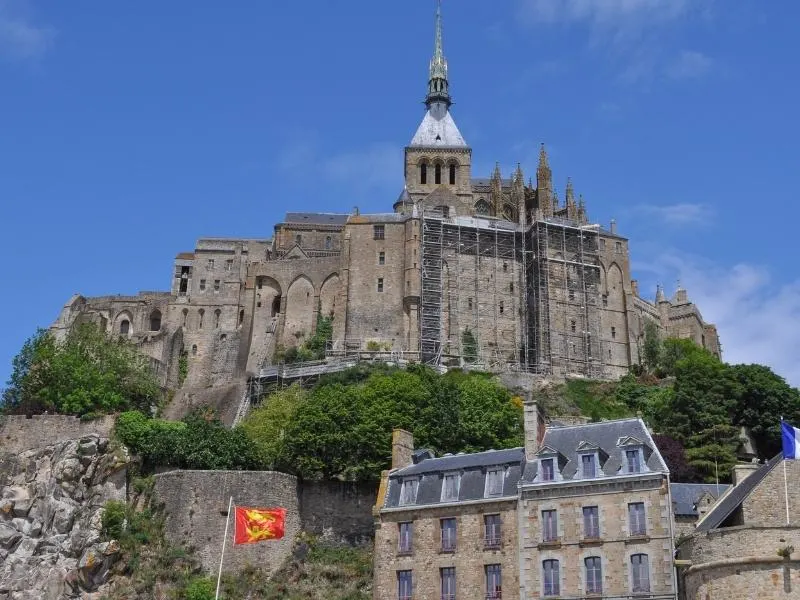
Pompeii in Italy
by looknwalk.info
When I started planning my 2014 trip to Italy, I had Naples on my radar. Why? Pizza, Pompeii, and Herculaneum. I ended up loving all of them.
Pompeii has been an ancient Roman city since 200 BC. But the 79 AD eruption of the Vesuvius buried the city under ash, together with the residents who didn’t manage to escape.
Nowadays, the huge ancient city is a UNESCO World Heritage site that paints the picture of Roman life. I’ve seen a lot of documentaries about it but until I’ve set foot on the site I couldn’t get a grip of how huge and interesting it was.
I spent more than 4 hours exploring the site with the booklet in hand. It is impossible to see everything but try not to skip: The Amphitheater (capable of holding 20,000 people), The Gymnasium (Great Palaestra, used for sporting activities), The Forum (the center of political life), The Temple of Apollo (the oldest part of the city), The Lupanar (or the ancient brothel), the baths, and Villa dei Misteri (interesting frescos).
Make sure to wear good walking shoes (for uneven surfaces), bring a water bottle (there are fountains through the site), wear something that you don’t mind getting dirty (you’ll spend time relaxing on the stones, trust me on this), bring snacks, and sunscreen!
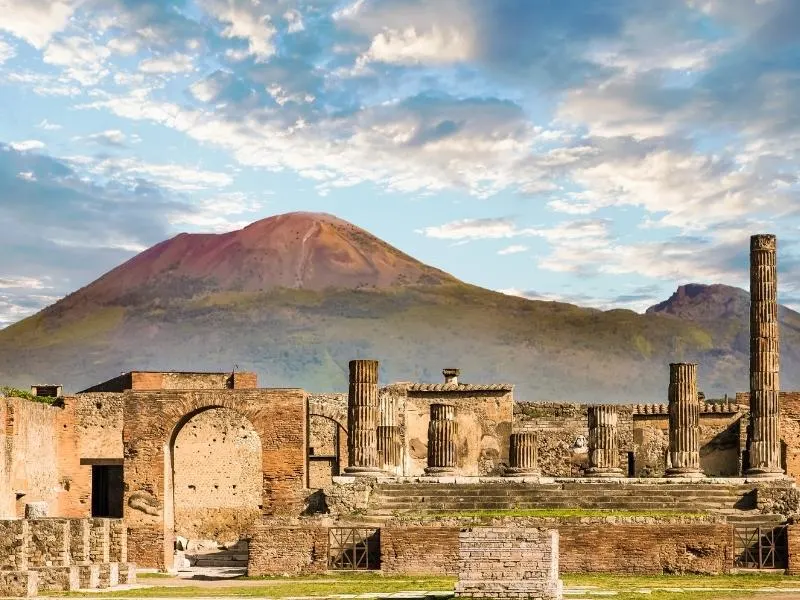
The canals of Amsterdam in the Netherlands
by wanderlustk.com
The canals of Amsterdam are famous as well as UNESCO protected since 1999! Much of the Netherlands was built on swampy land that required drainage techniques, including Amsterdam, which allowed Amsterdam to expand its borders beyond its original city borders.
The Amsterdam canal ring spans 14 different canals, including Herengracht (my favourite). Along Herengracht, you’ll find the beautiful Golden-age canal houses of Amsterdam’s most wealthy residents. Some have now been converted into beautiful museums that provide access to the “secret” gardens connecting houses on the next canal over, also owned by the same owners.
On major Dutch holidays, including the Pride parade, you’ll find floats on boats going up the Prinsengracht canal. Whether you’re walking, biking, or cruising along the canals, Amsterdam’s canals are not to missed!
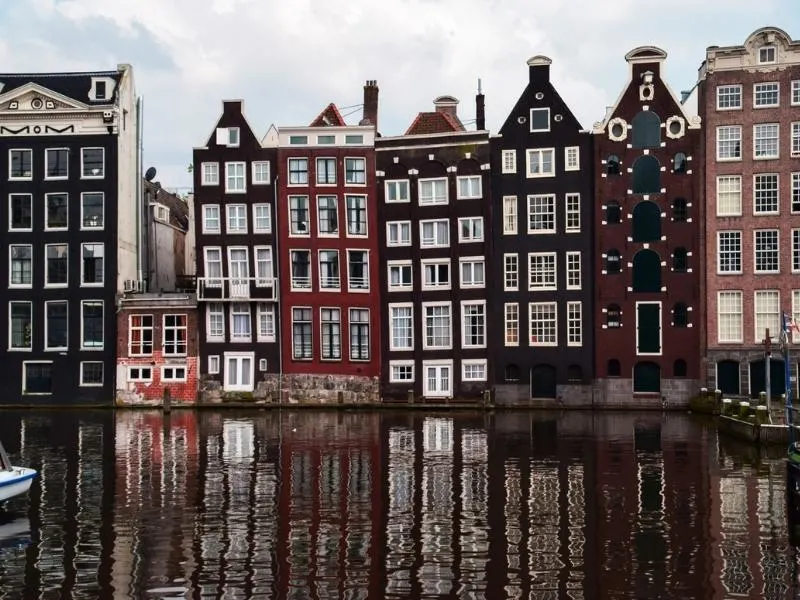
Edinburgh’s Old and New Towns
by Liza from tripsget.com
Edinburgh Old Town and New Town obtained Unesco Heritage title back in 1995 and since then attracted more tourists to the beautiful capital of Scotland.
The Old Town and the New Town of Edinburgh are very different: the Old Town would be what is considered “typical Edinburgh” a proper medieval district with vaults, underground streets, old cathedrals, a market square and two castles (Edinburgh castle and the Palace of the Holyroodhouse).
The New Town, on the contrary, is a proper neo-classical and Georgian district with posh houses and wide straight clean streets.
Both districts, the Old Town and the New Town are as different as chalk and cheese and are definitely worth visiting – the Old Town – for architecture and historical tours and the New Town – for fancy restaurants, shopping and pleasant walks, especially in Stockbridge and around the George Street.
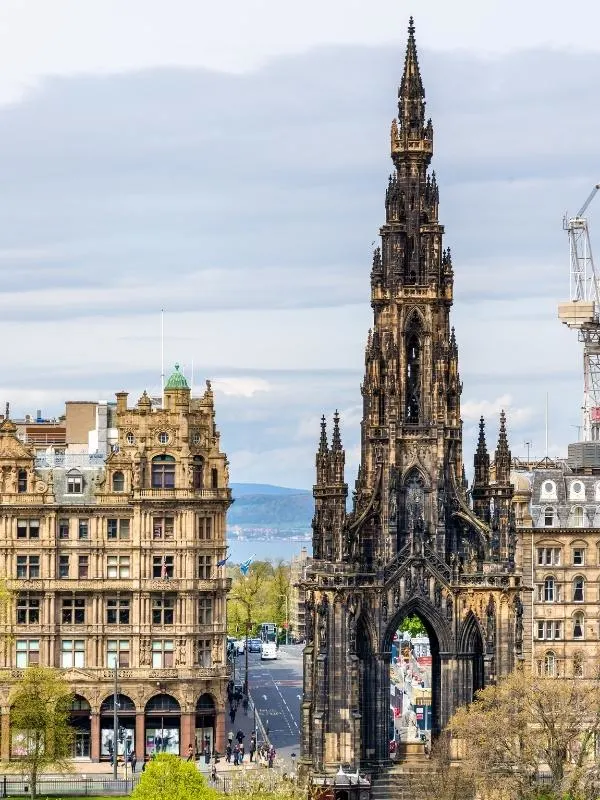
Drottingholm Palace in Stockholm Sweden
by nomadepicureans.com
As an Austrian I have to admit I’m somewhat picky when it comes to castles and palaces. I mean, what can possibly compare to the splendour of the Habsburg empire?
Well, it turns out the Swedish monarchy have their very own masterpiece: Drottningholm Palace. Inspired by the Palace of Versailles and built in the 16th century, it served as the royal summer residence until well into the 18th century.
Today it is the private residence of the Swedish royal family and a popular tourist attraction. It became a designated UNESCO World Heritage Site in 1991 as it is one of the most well-preserved royal castles from the 16th century and representative of the period’s European architecture.
The palace’s beautifully decorated rooms and reception halls transport you into a fairytale world. What makes the palace so special, though, is its beautiful gardens!
You could easily spend an entire day wandering the maze, admiring the swans, and strolling through the plantations. In addition, you can observe the daily change of the guards just outside the palace which is always a special treat 🙂
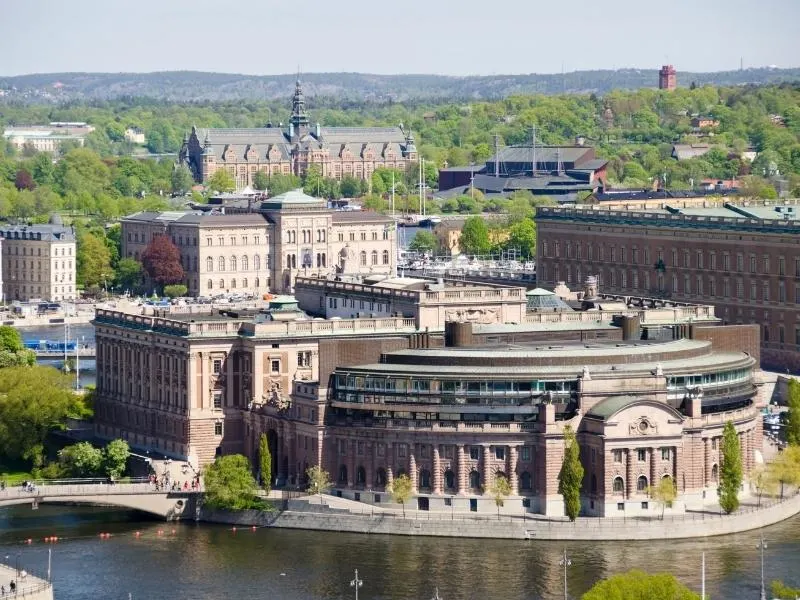
Meteora in Greece
by meghanthetravelingteacher.com
Meteora is a place that will transport you to another world. Back in the early 800s, monks afraid of persecution began to build these elaborate monasteries on top of rock spires throughout a small area in Greece.
Today, 6 of the 24 are still functioning and all are worth a visit. Most tourists come to Meteora via a tour or train from Athens which takes around 5 hours.
Walking into one of the monasteries after winding up hills, walking countless stairs, and coming through the doors gives you an incredible sense of awe and wonder.
So while Meteora is off the beaten path in Greece, it is definitely something you don’t want to miss!
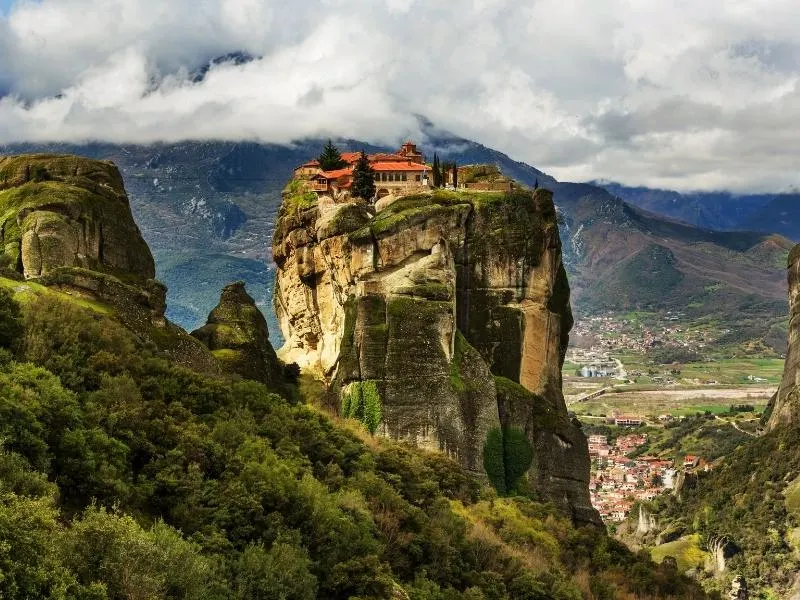
Acropolis in Athens Greece
by www.fillmypassport.net
One of the most iconic UNESCO Heritage sites in Europe is Greece’s Ancient Acropolis! An absolute must on any Greek vacation, the majestic Acropolis is a beautiful ancient citadel that sings between the columns with every breeze the earth brings.
Music to every historian’s ears. This monumental attraction sits atop a rocky hill with the remains left to admire. The Parthenon is the most famous and of the highest historical significance.
Historians of ancient sites believe these ruins were inhabited way back in 495-429 BC with construction commencing the fifth century BC! To this day, the country continues to make every effort to preserve its most prized attraction thousands of travellers visit yearly.
Do yourself a favour if you are staying in Athens and plan a sightseeing afternoon to check out the Acropolis. You will be glad you did.
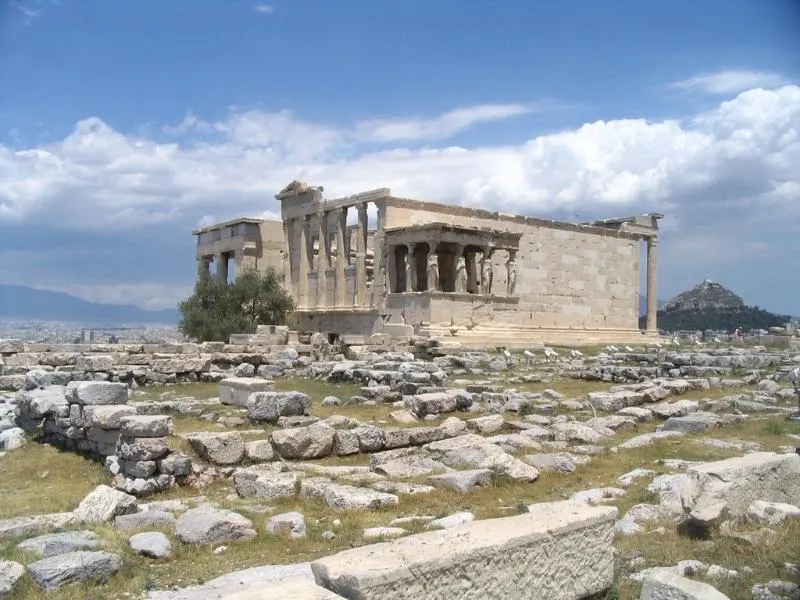
Paris France
When visiting Paris, you can’t ignore the beauty that is the River Seine that twirls it’s way right through the centre of the city. In the summer, a river becomes a means of transportation with its Batobuses carrying tourists along to the best sights of the city. In the winter it makes for stunning photographs and can even freeze over!
The river runs alongside popular architecture masterpieces like the Cathedral of Notre Dame, Saint Chapelle, and the Eiffel Tower.
A stroll along the riverside is a perfect, romantic experience no matter what the weather. The River Seine literally can’t be missed on any trip to Paris (unless you hide in your hotel room the whole time!) and is a perfect addition to the city of Love.
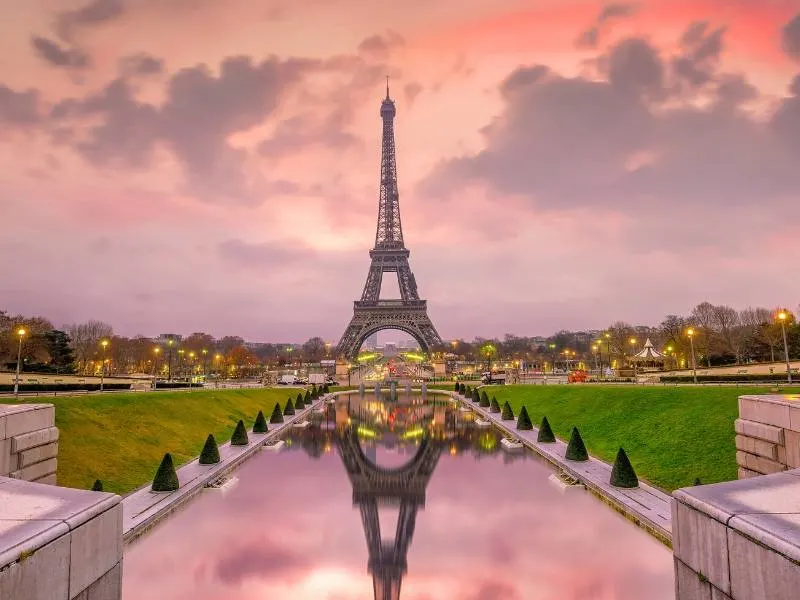
The Palace of Diocletian in Split Croatia
Have you ever walked into a place and fallen head over heels in love? Well, that is what happened to me when we visited Split during a trip around the very beautiful country of Croatia.
The historical complex of Split with the Palace of Diocletian was declared a UNESCO World Heritage Site in 1979. Walk in the ruins of the Palace which was built between the late 3rd and the early 4th centuries A.D. as a retirement home for the Emperor and feel the past all around you.
It is like nowhere I have visited on earth – perhaps Rome comes close – but wander the city and realise that people still live within its walls! Wander the stalls in the market that can be found in the cellars of Diocletian’s palace and enter and city through one of its four gates – gold, silver, iron and brass and prepare to fall in love!
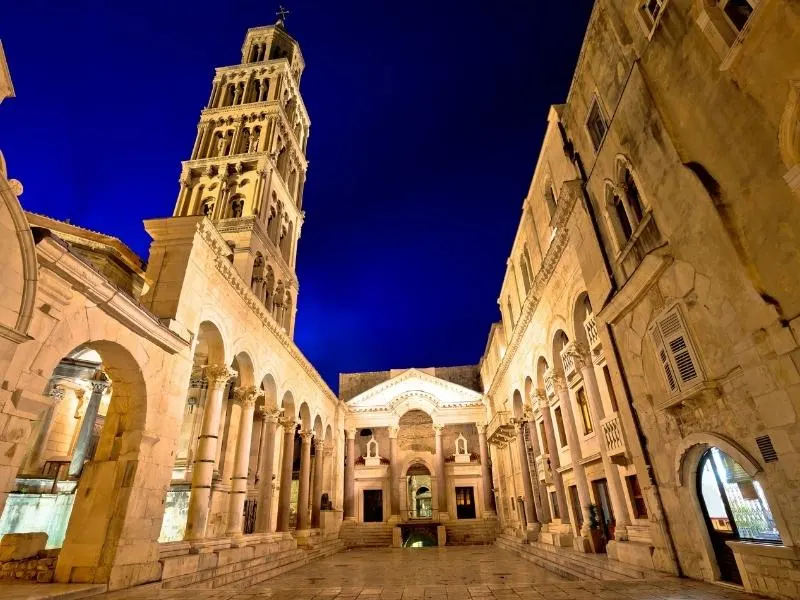
UNESCO World Heritage Sites around the world
This article has focussed on UNESCO World Heritage Sites in Europe. If you wish to learn more you will enjoy my articles about UNESCO World Heritage sites in the UK, Australia and Croatia.
Take my quiz and see how much you know about UK UNESCO World Heritage sites!
More European travel inspiration
